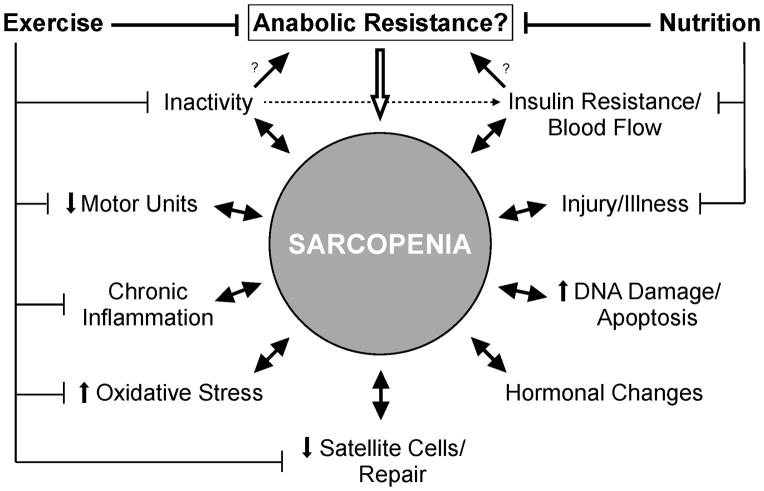Figure 2.
Schematic representing many key factors thought to contribute to sarcopenia. These factors include: anabolic resistance (i.e., impairments in muscle protein synthesis), inactivity, insulin resistance, the loss of motor units, injury and illness (i.e., hospitalization), chronic inflammation, DNA damage, increased oxidative stress, changes in hormonal milieu, and a reduction in satellite cells. We hypothesize that strategic exercise and nutritional interventions can slow the progression of sarcopenia due to their ability to overcome anabolic impairments and attenuate the impact of several other contributing factors. Further, it is likely that sarcopenia itself contributes to, and/or accelerates the impact of these factors on skeletal muscle mass and function (represented by the double arrows).

